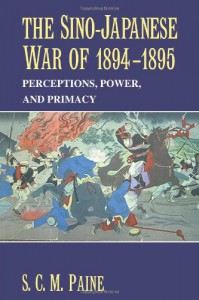A crushing disappointment of a book

At the end of the late 19th century, a dramatic power shift took place in East Asia, as Japan replaced China as the dominant country in the region. While this shift was the result of a series of developments that took place over decades, a key turning point was the Sino-Japanese War of 1894-5, when Japan defeated China in a short, sharp conflict that reflected the changing balance of power in the area. By its end Japanese forces had driven the Chinese from Korea and established themselves as a force to be reckoned with, one that was treated almost as an equal by the Western imperial powers.
That such "a seminal event in world history" has not received its due from Western historians is not surprising given the language barriers confronting scholars seeking to write about the war. For this reason alone Sarah Paine's effort to provide English-language readers with a long-needed history of the war is a commendable one. Yet this very demand contributes to a sense of disappointment with this book. To write it, Paine relies heavily upon the often unreliable coverage of the war in contemporary newspapers, supplemented with published documentary collections and the related secondary literature on the subject. Nowhere in its pages is there any evidence of archival research on her part that would provide a basis for judging the veracity of sometimes contradictory reports she uses, leaving unaddressed the numerous questions raised in her book about the exact course of events and the motivations behind the decisions made in response to them. Nor does it help when she exaggerates the importance of the war by ascribing to it developments that arguably predated (such as Western perceptions of Chinese decline) or postdated (such as Western regard for Japan as a modern power) it.
The result is a work that is a serious disappointment. Had Paine undertaken the archival labors necessary to sort through the often confusing reportage of events it would have been a major contribution to our understanding of the war and its place in modern history. As it is, however, she has written a book that is useful as an introduction to the conflict but ultimately serves to demonstrate how much more work needs to be done to properly understand its place in the transformation of the fortunes of China and Japan in the late 19th century.






